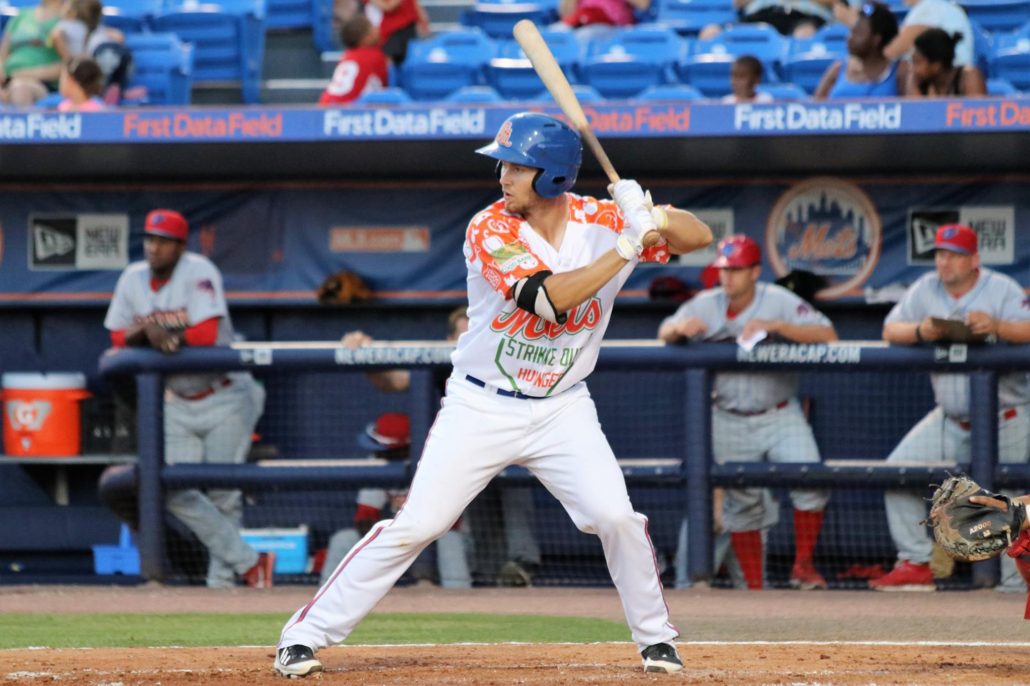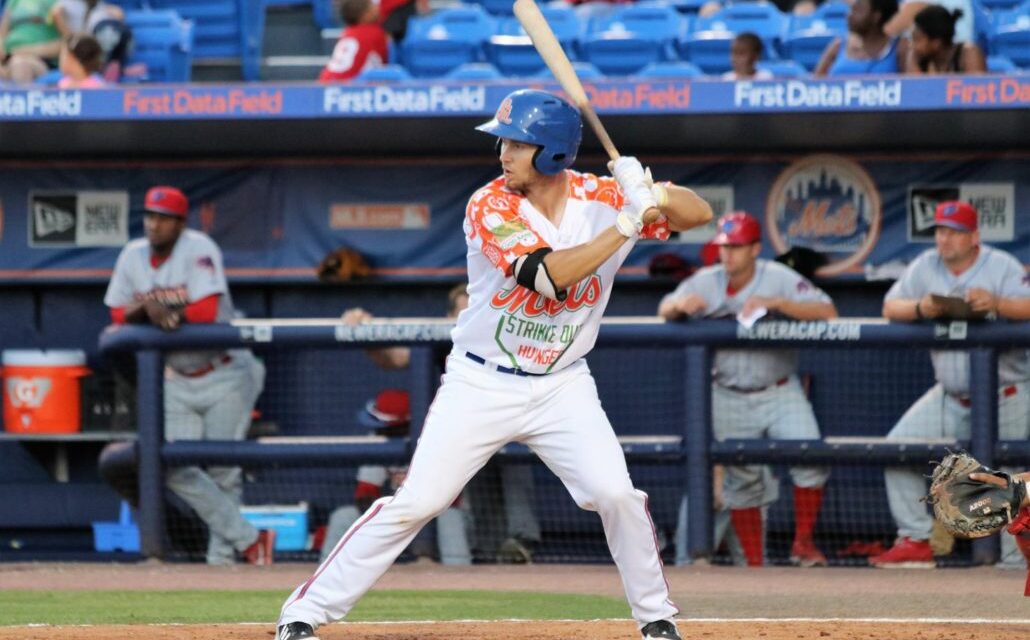
Last night, the New York Mets started Jose Bautista at first with Jack Reinheimer in left. It was the latest and most blatant example of just how far the Mets are willing to go to give Dominic Smith and Peter Alonso a chance to prove themselves at the Major League level.
We have been conditioned to see and expect promising prospects to be buried behind underperforming veterans at the Major League level. What is troubling is this has happened most of the season in the minors.
Entering this season, catching prospect Patrick Mazeika was ranked by Baseball America as the Mets 18th best prospect. This ranking was mostly predicated on his bat:
He hit .348 in three years at Stetson and has hit .311 in three pro seasons, thanks to a feel for the barrel and excellent strike-zone judgment. Mazeika ranked third in the high Class A Florida State League with a .389 on-base percentage in 2017 and owns a career .411 mark, though with a focus on contact, his power production is limited mostly to line drives to the gaps. Mazeika shows aptitude for receiving the ball, but his ability to block pitches in the dirt is hampered by his slow-twitch actions, and his arm plays as below-average. A slow tempo with calling pitches turns off some scouts.
Clearly, Mazeika was a work-in-process behind the plate, but he was one who had been making strides defensively.
For example, from 2016 to 2017, Mazeika would cut his passed balls nearly in half while catching an additional 266.1 innings.
While the defensive strides were important, Mazeika’s bat was more important.
With catchers like Tomas Nido and Ali Sanchez, the Mets had very strong defensive catchers in their system, but really, Mazeika was the only offense-first one. Arguably, Mazeika was the best hitting catcher in the Mets system.
The reason why he is such a good hitting prospect behind the plate is his eye.
Entering this season, Mazeika has had an 11.2 percent walk rate, and he has drawn just 10 fewer walks than strikeouts in 998 plate appearances.
Also, he’s had flashes of power.
In April and May 2017, Mazeika hit .314/.391/.506 with 15 doubles, six homers, and 35 RBI. It should be noted this occurred while he was splitting time between catcher and first while Alonso was on the disabled list.
As he caught more, the power dipped, but the on base skills remained. With his ability to maintain his approach, it’s possible Mazeika could continue hitting for power later in the season as he adapted to the grind of catching everyday.
Except Mazeika never really got that chance.
So far this season, he has only caught 65 out of Binghamton’s 123 games. While catchers tend to sit more frequently than other position players, they don’t sit for nearly half the games played.
Now, you could point to his struggles at the plate. So far this year, Mazeika is hitting just .211/.317/.331.
Belying those numbers is Mazeika continuing to have a terrific eye at the plate. In fact, he has two more walks than strikeouts this season.
Another consideration is a ridiculously and unsustainably low .216 BABIP. That BABIP suggests bad luck and that Mazeika’s numbers should return to normal.
We’re seeing that in August with him hitting .381/.480/.524.
Seeing what he’s capable of doing as a hitter should raise questions why Mazeika is not receiving sufficient playing time to develop not just as a hitter but also as a catcher.
Believe it or not, the answer to that question is Jose Lobaton.
Lobaton was signed to a minor league deal to provide the Mets with much needed catching depth behind Kevin Plawecki and Travis d’Arnaud.
As he was needed for depth, the Mets needed him to stay sharp, and as a result, he was instilled as the starter for Triple-A Las Vegas. With Lobaton in Triple-A, and Nido needing to play everyday, Nido was set to repeat Double-A.
With Nido being the better regarded prospect, he was the starter with Mazeika as his backup.
Certainly, you could understand the thought process as the season opened. However, after Lobaton hit .152/.264/.239 in 19 games with the Mets, his throwing out just 20 percent of base stealers, and his -1.4 RAA, it was clear Lobaton should not be blocking anyone.
And yet, here we are.
Lobaton is holding the Triple-A starting job, Nido is holding the Double-A starting job, and Mazeika is a backup.
Ultimately, Mazeika may not develop sufficient power or improve enough defensively to ever earn a call up to the majors. Certainly, he’s not getting that chance now, and for some reason, a 33 year old catcher who is a career .216/.294/.320 hitter, is a part of the reason why.
















